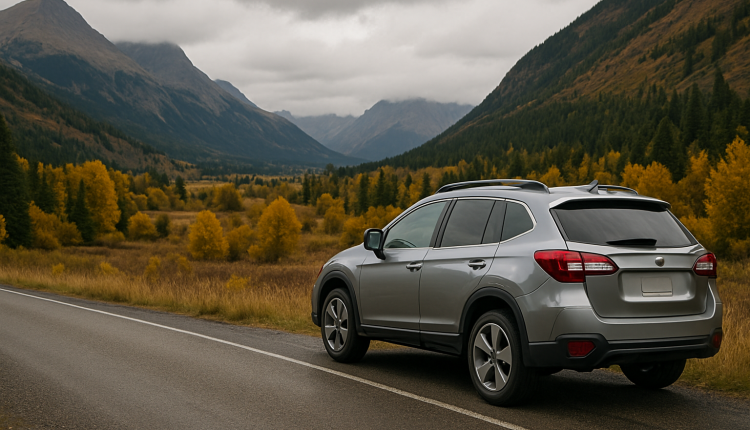When most people think of road trips, their minds go straight to peak travel seasons — summer vacations, holiday weekends, and school breaks. While those times have their charm, they often come with packed highways, sold-out accommodations, and crowded landmarks. But there’s an underrated alternative that savvy travelers are increasingly embracing: the off-season road trip.
Taking to the road during shoulder or off-peak seasons can reveal an entirely different travel experience — quieter, more authentic, and often more affordable. Here’s why the off-season might just be the best time to explore, and how to make the most of it.
Why Travel Off-Season?
1. Fewer Crowds, More Connection
One of the most immediate benefits of traveling off-season is the reduced number of tourists. Famous destinations that are usually bustling become peaceful and more accessible. You get to experience locations in a more intimate and relaxed way, whether it’s strolling through a quiet historic town, enjoying a scenic hike without the crowd, or speaking with locals who aren’t overwhelmed by peak-season foot traffic.
2. Better Prices on Everything
Hotels, campgrounds, attractions, and even restaurants often lower their prices during slower months to attract visitors. This means you can stretch your travel budget significantly further. With fewer bookings, you also have more negotiating power or last-minute flexibility without compromising quality.
3. Unique Seasonal Experiences
Every region has something special to offer during its off-peak periods. Think misty coastal views in early spring, vibrant foliage in late fall, or snowy desert landscapes in winter. You might also find seasonal festivals, local harvests, or wildlife migrations that you wouldn’t encounter during the summer rush.
Planning a Successful Off-Season Road Trip
1. Choose Your Region Wisely
Not all destinations are ideal during their off-season. Mountain roads may be closed in winter, and some coastal towns might shut down entirely. Do some research to ensure your chosen region still has open services, navigable roads, and weather that suits your comfort level.
Great options for off-season trips include:
- Southwest U.S. in late winter or early spring for mild weather and striking desert scenery.
- New England in early November for post-peak fall beauty without the tourist crowds.
- Southern states like Georgia, Louisiana, or Texas in the late fall for pleasant temperatures and cultural charm.
- Pacific Northwest in the spring for lush greenery, waterfalls, and blooming wildflowers.
2. Pack for Unpredictable Weather
Off-season travel often means variable weather. Layers are your best friend. Be prepared for chilly mornings and warm afternoons, unexpected rain, or even early snowfall, depending on your route. Check your car’s readiness too — ensure tires are season-appropriate, wipers work well, and emergency gear is packed.
3. Be Flexible With Your Itinerary
One of the joys of off-season travel is having the space to be spontaneous. Fewer bookings and quieter roads mean you can linger longer in a charming small town, take a scenic detour, or discover a local festival you didn’t plan for. Give yourself room in your itinerary to follow the unexpected.
4. Check Seasonal Closures
While fewer tourists can be a blessing, it sometimes means shorter hours or closed attractions. Always call ahead or check online for seasonal schedules of restaurants, museums, or national park visitor centers. Plan ahead for meals, as some rural spots may have limited dining options in the off-season.
Off-Season Road Trip Ideas
1. Great Smoky Mountains in Late Fall
After the leaf-peeping crowds fade, the Smokies turn quiet, with moody mist-covered peaks and excellent hiking trails. Towns like Gatlinburg and Pigeon Forge are less busy, making it easier to enjoy local culture and comfort food.
2. Utah’s National Parks in Early Spring
Zion, Bryce Canyon, and Arches see intense summer crowds, but spring offers cool hiking weather, blooming desert flowers, and dramatic skies — without the lines. Campgrounds are easier to reserve, and trails feel wilder.
3. California’s Central Coast in Winter
Skip the summer beach rush and head to Monterey, Big Sur, or San Luis Obispo in the cooler months. The ocean is wilder, the air is crisper, and you may even spot migrating whales from the shore.
4. Route 66 in the Shoulder Season
Drive the iconic highway in April or October when temperatures are moderate and towns along the way are quieter. It’s the perfect time to explore classic diners, vintage motels, and forgotten Americana at your own pace.
A Different Kind of Road Trip Memory
Traveling during the off-season often leads to richer, more personal stories. It’s in these quiet months that you might find yourself chatting with a shop owner who shares a hidden trail, watching a sunset without another soul in sight, or discovering a small-town bakery that becomes a lifelong favorite.
These trips aren’t just about checking off destinations — they’re about meaningful experiences and slowing down the pace of exploration. Off-season travel invites reflection, deeper connection, and a more conscious appreciation of the road ahead.
Final Thoughts
While peak season road trips will always have their place, the off-season offers something truly special — a chance to see familiar places in a new light and to discover paths less traveled. If you’re craving a more peaceful, flexible, and cost-effective adventure, consider packing your bags for an off-season escape. The road is waiting, and it’s never been quieter.


